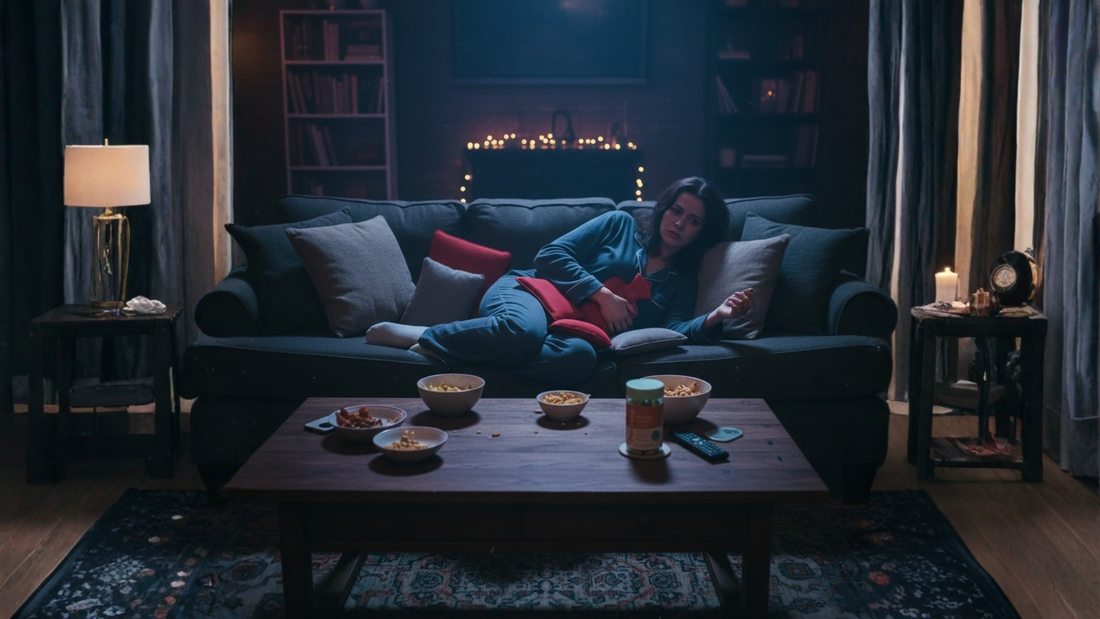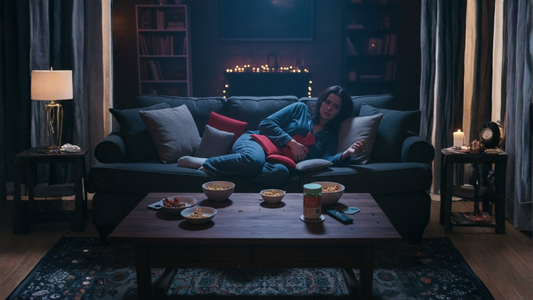
What If Every Period Phase Were a Scene from a Modern Horror Film
Share
The Monthly Horror Movie Every Woman Knows: Period Cramps Edition
If period cramps were a horror movie, the menstrual cycle would be a recurring franchise—one that comes back every month, complete with jump scares, emotional plot twists, and unexpected sequels. For many women, cramps aren’t just discomfort; they’re body horror in real life. Between the bloating, fatigue, mood swings, and snack-fueled survival tactics, every phase of the menstrual cycle could easily fit into its own terrifying film.
Every month, countless women find themselves starring in a real-life horror story — complete with emotional twists, jump scares (hello, surprise cramps), and psychological tension that could rival any thriller on Netflix. If period cramps were a horror movie, it wouldn’t just be about pain. It would be about transformation, survival, and the terrifying unpredictability of hormones.
What if each menstrual phase was its own movie scene — complete with a plot, mood, and cinematic chaos that mirrors what’s happening in the body? From the eerie calm of ovulation to the full-blown gore of menstruation, every phase could match a horror film from the past decade.
Here’s how the monthly cycle plays out — horror edition.
Image Clip from The Haunting Hill (2018) 
Menstrual Phase: “The Haunting of Hill House” (2018)
Where to Watch: Netflix
The Haunting of Hill House tells the story of a family haunted by their past — and by the spirits that lurk within their childhood home. Each character is haunted differently, facing their trauma in their own way, until they confront the truth that the house itself has a grip on them.
When the period begins, it’s as if the body becomes a haunted house, creaky, painful, and full of ghosts from hormonal chaos.
The menstrual phase feels exactly like being trapped in Hill House, every cramp, a ghostly knock, every emotional dip, another door creaking open. Hormones plummet, the body releases what it’s been holding all month, and pain echoes through every muscle. Fatigue, bloating, and back pain make it feel like you’re being haunted from the inside out.
In this phase, estrogen and progesterone levels drop, triggering:
- Cramps (from uterine contractions)
- Fatigue (blood loss + hormonal dip)
- Emotional lows (lower serotonin levels)
But just like in the show, release is part of healing. Once the body purges what it no longer needs, peace (and energy) starts to return. Think of your heating pad as your exorcism tool — and your PumPums Gummies as the comfort that helps you survive the haunting.
Follicular Phase: “Get Out” (2017)
Where to Watch: Amazon Prime Video, Apple TV
But just like in the show, release is part of healing. Once the body purges what it no longer needs, peace (and energy) starts to return. Think of your heating pad as your exorcism tool and your PumPums Gummies as the comfort that helps you survive the haunting.
The follicular phase is that deceptive calm after the storm. Estrogen starts to rise, mood and energy improve, and you begin to feel like yourself again — but beneath that surface, the body is still recalibrating. It’s the “don’t get too comfortable” moment before the next twist.
This phase often brings:
- Rising energy
- Sharper focus
- Renewed motivation
Like the film’s eerie tension, this phase is all about awareness. You may feel social, productive, and optimistic — but overdoing it can throw your hormones off balance. Supporting gut health and hydration now can prevent the PMS horror from returning stronger later.
Dani (Florence Pugh) from the scene of Midsommar (2019).

Ovulation Phase: “Midsommar” (2019)
Where to Watch: Hulu, Amazon Prime Video
The ovulation phase is visually stunning — a burst of beauty and brightness — much like Ari Aster’s Midsommar. It’s the time when estrogen peaks, libido spikes, and the world feels bathed in sunlight. Everything feels heightened, intense, and almost surreal.
But if you’ve seen Midsommar, you know that behind all the flowers and sunshine lies something disturbingly real. The protagonist, Dani, experiences both empowerment and unraveling — mirroring how ovulation can feel both euphoric and emotionally charged.
During ovulation, the body is at its most fertile and magnetic. But there’s also:
- Mid-cycle bloating
- Breast tenderness
- Mood sensitivity
It’s a reminder that even in beauty, there’s discomfort — a theme Midsommar captures perfectly. Beneath the flower crowns, something dark is stirring — just like in the body.
Image Clip from Hereditary (2018)

Luteal Phase: “Hereditary” (2018)
Where to Watch: Max (formerly HBO Max), Amazon Prime Video
A24’s Hereditary follows a family unraveling after a tragic loss, with darkness spreading like wildfire through their home. It’s slow, suffocating, and full of emotional breakdowns that feel terrifyingly real.
Like Annie (Toni Collette) in Hereditary, one wrong move (or comment from a friend) can trigger a complete meltdown. The body becomes the setting for both subtle unease and explosive emotion. The ovulation phase is the Midsommar of the cycle — dazzling, magnetic, and emotionally heightened. Estrogen peaks, confidence rises, and libido blooms. You’re glowing, social, and full of energy, like the film’s sunlit aesthetic.
Symptoms include:
- Bloating and water retention
- Heightened emotions (PMS)
- Cravings and fatigue
Your body is preparing for menstruation, which means bloating, fatigue, and emotional rollercoasters. Like the film’s haunting tension, it’s slow and psychological. The solution? Ground yourself before the chaos hits. Light exercise, hydration can help reduce inflammation and emotional fog.
Image Clip from Hard Talk to Me (2022)

When PMS Hits Hard — “Talk to Me” (2022)
Where to Watch: Netflix, Amazon Prime Video
In Talk to Me, a group of teens discovers they can communicate with spirits using a mysterious embalmed hand, but once they open the door to the other side, the darkness takes over.
PMS feels exactly like that; once it takes hold, it’s hard to get your body back. You’re overtaken by cravings, mood swings, and cramps that feel out of your control. It’s possession by hormones — and no one can quite understand unless they’ve lived it.
This is the point in the month when natural remedies can make a world of difference. Magnesium, B vitamins, and PumPums Menstrual Relief Gummies offer plant-based support to calm the chaos without sugar spikes or synthetic ingredients. Because once PMS starts talking, you need all the help you can get to quiet it down.
Surviving the Monthly Horror Show
Even the best horror films end eventually — and so does PMS. Managing cramps and mood swings is about knowing your body’s plotline and preparing before the next twist.
Here’s how to take control of the story:
- Track your cycle: Use apps like Clue or Flo to predict hormonal changes.
- Support your gut health: A balanced gut can help reduce inflammation and mood dips.
- Stay hydrated: Electrolyte-rich drinks or even a few pickle-flavored bites (hello, Pumpums Pickle+ Blend) can ease cramps.
- Get moving: Gentle yoga or walking helps circulation and reduces tension.
- Snack smart: Magnesium-rich foods like bananas or almonds can help regulate mood and muscle cramps.
Every Cycle Deserves Its Own Ending
If periods were a horror movie, they wouldn’t be about fear — they’d be about power. The kind of story where the main character survives the pain, learns from it, and comes back stronger every month.
Each phase has its own rhythm — its own cinematic moment — and once you understand your body’s storyline, the jump scares become easier to predict.
So next time your cycle cues up, dim the lights, play your favorite scary movie, and remember — cramps may be terrifying, but you’re the final girl who always wins.
Need a little help making it to the credits? Grab PumPums Menstrual Relief Gummies — your sugar-free, plant-based, and pickle-powered co-star for every monthly horror film.



